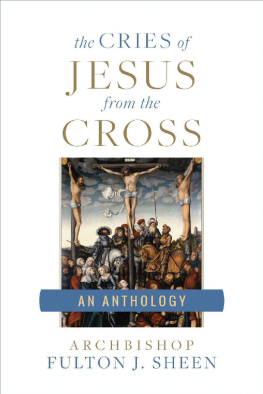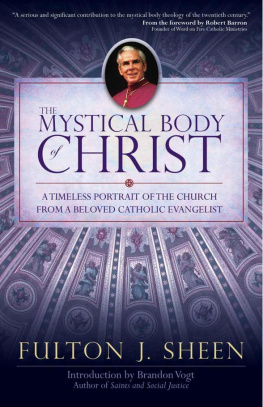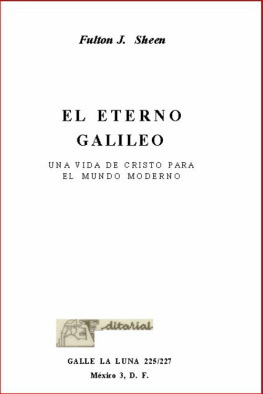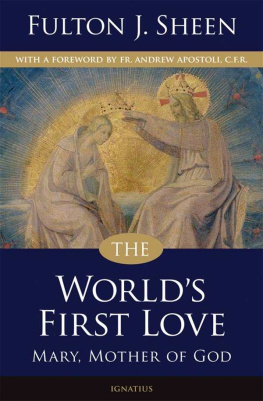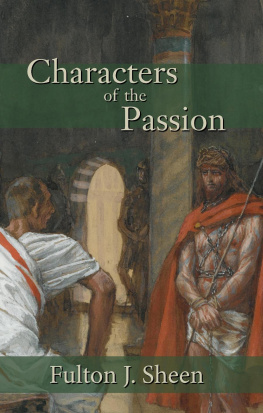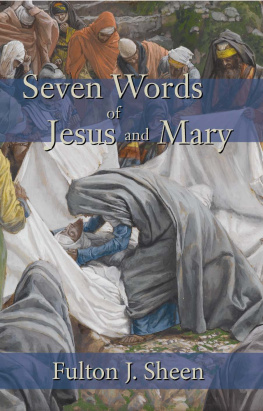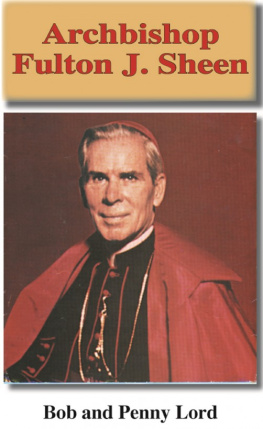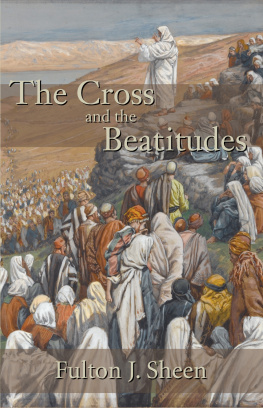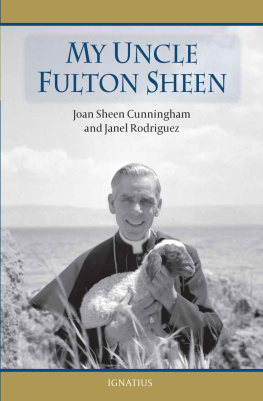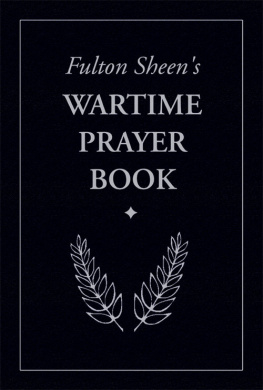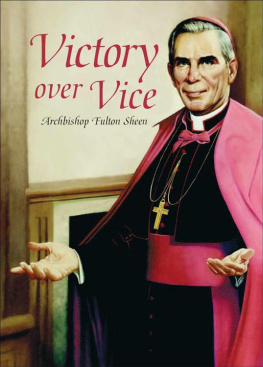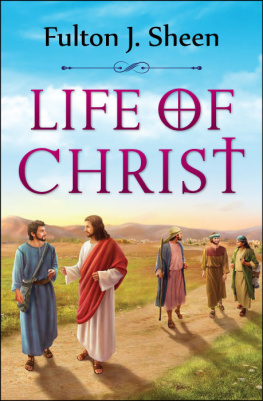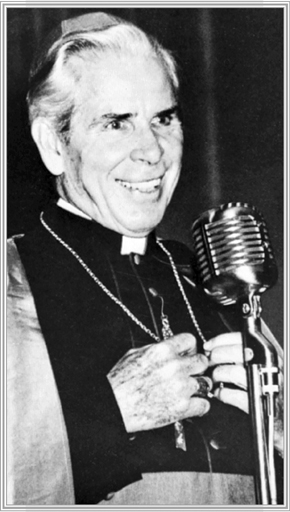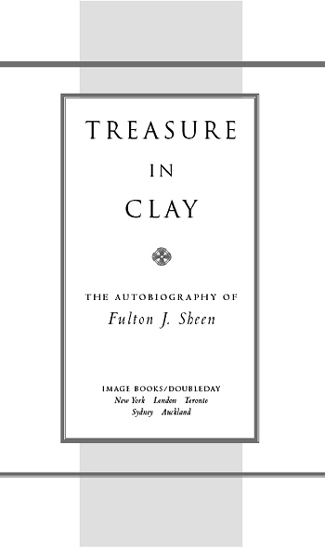FOREWORD
A Prophet Suffering in Silence

In 1957 Bishop Fulton Sheen, then the best-known Catholic in America, with an unmatched television following, began the great trial of his life. He would lose much more than the public ever realized, all over his refusal to give Cardinal Francis Spellman of New York milk money.
In the late 1950s the government donated millions of dollars worth of powdered milk to the New York Archdiocese. In turn, Cardinal Spellman handed that milk over to the Society for the Propagation of the Faith to distribute to the poor of the world. On at least one occasion he demanded that the director of the Society, Bishop Sheen, pay the Archdiocese for the donated milk. He wanted millions of dollars. Despite Cardinal Spellman's considerable powers of persuasion and influence in Rome, Sheen refused.
These were funds donated by the public to the missions, funds Sheen himself had personally contributed to and raised over the airwaves. He felt an obligation to protect them, even from the itchy fingers of his own Cardinal. Undeterred, Spellman appealed the case to Pope Pius XII personally, in Sheens presence. After examining the facts, Pope Pius sided with Sheen. His biographer, Thomas Reese, reports that Sheen was later confronted by Spellman, who said, I will get even with you. It may take six months or ten years, but everyone will know what you are like. It took Spellman less than ten years.
By the fall of 1957, Bishop Sheen, a Catholic media fixture for nearly thirty years, retired from the airwaves, ending his Life is Worth Living program at the height of its popularity. It is widely believed that Cardinal Spellman drove Sheen off the air. (At the time the show was shuttered an estimated 30 million viewers and listeners tuned in each week.) Suddenly the illustrious preacher found himself unwelcome in the churches of New York. Spellman cancelled Sheens annual Good Friday sermons at St. Patricks Cathedral and discouraged clergy from befriending the Bishop. By 1966, Spellman would get Sheen reassigned to Rochester, New York, terminating his leadership at the Society for the Propagation of the Faith.
As compelling as all of this is (and it is), none of the details related to the Spellman affair nor Sheens personal feelings about the Cardinal's actions are mentioned in this autobiography. These omissions raise an interesting point.
Somewhere in these pages Sheen writes: The curious would like me to open healed wounds; the media in particular would relish a chapter which would pass judgment on others We live in days of assassinswhere evil is sought in lives more than good to justify a world with a bad conscience. In the pages that follow, no scores are settled, no names named. Oh, there are the fleeting references to trials both inside and outside the Church (p. 360) and asides like, I am certain that it is God who made certain people throw stones at me (p. 332). But those looking for literary payback need to look elsewhere. (Spellman is even praised!) Instead, what follows is a singular autobiography, one that is more an internal portrait of a man than an external one. And what a man Bishop Fulton Sheen was.
Pope Pius XII once referred to Sheen as a prophet of the times. He engaged all facets of the culture in a dazzling way. An author of more than sixty books and a columnist, he used his well-trained mind to touch the common man. Explaining the Gospel with true innovation, he often appealed to poetry, philosophy, history, architecture, song, and art to drive home his message. For sixteen years as the National Director of the Society for the Propagation of the Faith he raised hundreds of millions of dollars for the worlds poor, donating about 10 million dollars of his personal earnings to the missions. Sheen built churches and hospitals for poor blacks in Alabama, tirelessly preached retreats, visited the imprisoned and sick, taught convert classes, and offered Mass in parishes around the world.
But he is perhaps best known for his broadcast work. Before Mother Angelica, Pat Robertson, and Joel Osteen, there was Bishop Fulton Sheen. In his magenta cape and zucchetto he was a media trailblazer who often beat Milton Berle and Frank Sinatra in the ratings. For more than fifty years he transformed rarified theology into the idiom of the masses, using radio and then television to bring a message of hope to people of all faiths and those of none at all.
I remember being in need of a spiritual favor about sixteen years ago. Knowing that I was in television, a priest friend suggested that I go make a deal with Archbishop Sheen. Following his advice, I knelt before the crypt at St. Patricks in New York one afternoon and promised the Archbishop that if he interceded with God on my behalf, I would do all I could to get his program back on television. Sheen answered my prayer. It would take me several years to fulfill my part of the bargain. At this writing, Sheens Life is Worth Living follows the broadcast of my program on EWTN each Friday night.
Watching the reruns today can be a jarring experience. The stylized nineteenth-century gestures, the dramatic vocal escalations, and that unfurled cape lack the naturalism we have come to expect from television personalities. But if you can get past the visuals and focus on the message, there are rich treasures there.
This autobiography would be Bishop Sheens last treasure. It is at once an exploration of an apostles journey and a history of the Catholic Church in the twentieth century. A participant at the Second Vatican Council, Sheen offers a stinging critique of the failure to properly interpret the Council documents. He also presents one of the most cogent and reasonable explanations of celibacy one is likely to ever read (turning to Gandhi and Dag Hammarskjld to make his case).
The professor in Sheen can't help but use this autobiography to instruct; so as you learn about the man, you will also receive insights on the nature of the Eucharist, the papacy, and the Blessed Mother. Included here are hilarious and touching remembrances from his long life. But it is the reflective personal revelationsthe spiritual lessons learned in painthat distinguish what is here.


